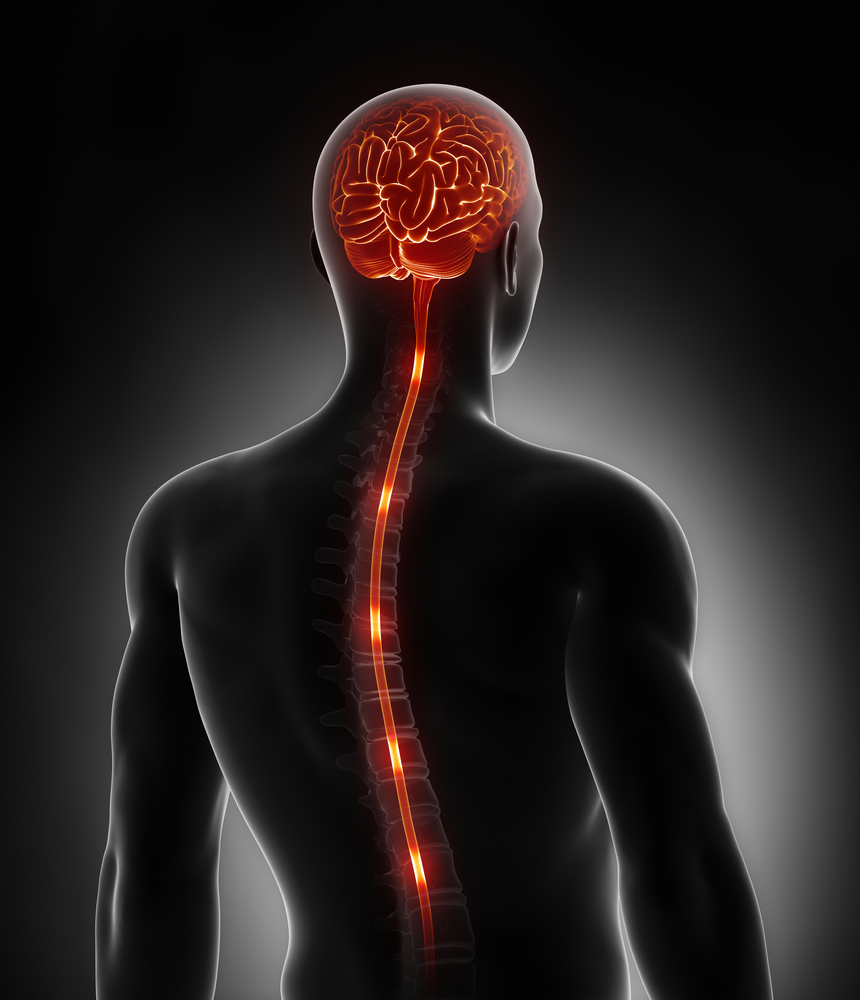An introductory look into the Brain and Nervous System
The brain is the master controller of the body and is part of your Central Nervous System (CNS). There are billions of nerve cells, also called neurons, in the nervous system. The brain alone has about one hundred billion neurons in it, which to put into perspective, is as many stars as in the Milky Way galaxy. The neurons of the brain and its continuation down through the spinal cord make up the CNS. This vital and delicate system is housed safely within your skull and spinal vertebrae. Outside of the CNS is the Peripheral Nervous System, or PNS. The PNS composes all nerves outside of the brain and spinal cord and carries both sensory and motor messages. Communication in the body is a two-way street, messages travel from the brain to the body and from the body back to the brain. In fact, there are more messages sent from the body to the brain as updates constantly arrive from all body systems, organs, muscles, hormones, and even bacteria in the gut. It is through the nervous system that your body can maintain internal homeostasis while simultaneously respond and adapt to the external environment.
Incredible Nervous System Facts
- 268 mph: The fastest nerve transmission of the body occurs in the spinal cord, which is encased with a speed-boosting protein and fat layer called myelin.
- There are 43 different pairs of nerves that connect the CNS to every part of the body. 12 of these nerves are connected to the brain (cranial nerves) while the remaining 31 are connected to the spinal cord and protected by your spine
- Most of the 2 billion or so nerve endings in the outermost layer of our skin sense pain; those dedicated to temperature allow us to detect differences as small as 0.01 degrees Fahrenheit.
- Only four percent of the cells in our brain are active at one given moment, the rest are kept in reserve
- The brain weighs approximately three pounds and as we grow older, the brain loses a gram of weight per year.
- Most neurons cannot divide to form new cells, so there is no way to replace them if they die. But living neurons continue to grow all of our lives, forming new branches and connections with other neurons. This is especially important when understanding the neuroplasticity of the brain and the ability to create new, learned synapses.
Within the CNS: Balance is Key
A balance exists within the CNS between the sympathetic and parasympathetic nervous system. The sympathetic nervous system is your fight-or-flight stress response. It functions for protection and survival, emergency situations, and skeletal muscle activity. The parasympathetic nervous system conserves energy, promotes “housekeeping” during rest, and increases digestive activity.
Chronic, long-term stress can drive your body into a constant state of sympathetic activity resulting in digestive problems, high blood pressure, adrenal fatigue, hormonal imbalance, hard to lose weight, and low libido. Being trapped in this state of high sympathetic activity is much more common.
The less common type of imbalance, caught in a high parasympathetic state, includes these symptoms: heavy fatigue, insomnia, no libido, chronic tiredness, low motivation, low resting heart rate, and low blood pressure.
It is important to understand that stress is needed for the body to function. Detecting what type of stressor you are facing will be helpful in knowing how to address it and adapt.
Our “Second Brain”: The Gut
Attention is growing towards understanding the connection between our gut, Gastrointestinal System, and brain. Due to the large number of neuronal connections to the GI system and the trillions of bacteria we rely on every day, researchers are starting to uncover new and powerful information that they believe will help change the landscape of healthcare.
Michael Gershon, author of the book Second Brain, details the connection: “Technically known as the enteric nervous system, the second brain consists of sheaths of neurons embedded in the walls of the long tube of our gut, or alimentary canal, which measures about nine meters end to end from the esophagus to the anus. The second brain contains some 100 million neurons, more than in either the spinal cord or the peripheral nervous system.
This multitude of neurons in the enteric nervous system enables us to “feel” the inner world of our gut and its contents. Much of this neural firepower comes to bear in the elaborate daily grind of digestion. Breaking down food, absorbing nutrients, and expelling of waste requires chemical processing, mechanical mixing, and rhythmic muscle contractions that move everything on down the line. Thus equipped with its own reflexes and senses, the second brain can control gut behavior independently of the brain.” Having a healthy microbiome is essential to your overall health.
Movement and Our Spine
Movement and activity supercharges our brain. Nobel Prize recipient Dr. Roger Sperry says that the spine is the motor that drives the brain. According to his research “90% of the stimulation and nutrition to the brain is generated by the movement of the spine. Only 10% of our brain’s energy goes into thinking, metabolism, immunity, and healing.”
Sperry demonstrated that 90% of brain energy goes into processing and maintaining the body’s relationship with gravity. Dr. Sperry used the analogy of a windmill generating power to the movement of the spine generating power for the brain.
Movement, activity, and fitness increase proprioception throughout the body. Proprioceptors’, meaning “receptors for self”, purpose is primarily to give detailed and continuous information about the position of the limbs and other body parts in space. Proper spinal posture, movement of facet joints within the spine, and musculoskeletal activity are essential to energizing the brain.
Brain Food
Hippocrates: “Let food be thy medicine and medicine be thy food.”
Your brain is always “on”. It never takes a break, even though you may want it to sometimes. It works for you around the clock, 24/7, 365 days per year. Fortunately, you don’t have to think about this just like your heart and lungs (cardiovascular) beat and breathe for you.
It’s interesting to note that your brain and nervous system is the first in fetal development and the very first organ after is the heart, hence the importance of these two most vital systems.
You are what you eat, so you hold the choice and control to either feed your brain good healthy fuel or poor, low-quality fuel. With poor nutrition, your body builds free radicals and damaging oxidative species that will reduce the quality and quantity of life. Let’s prevent that from happening with better food choices on our plates. Below you will find a summarized list of brain supportive foods, supplements, and activities to get you started:
Brain Supportive Foods
- Olive Oil
- Coconut Oil
- Wild Salmon
- Blueberries
- Turmeric
- Eggs
- Walnuts
- Avocado
- Fermented vegetables
- Cruciferous vegetables
- Grass-fed beef and clean meats
Brain Supportive Supplements
- B Vitamins
- Methylated B Vitamins
- Probiotics
- Alpha Lipoic Acid
- Chlorella (cracked cell wall)
- Magnesium/Potassium/Calcium
- Vitamin D3
- 5-HTP
- Valerian
- John’s Wort
- Ginseng
Brain Supportive Activities
- Corrective Chiropractic spinal care
- Meditation
- Yoga
- Exercise
- Grounding/Barefoot walking
- Brain exercise games/apps
There is much more to discover about the brain and its connection not only within our body and gut, but its interaction with the environment and each other. Ready to heal the brain? Start with a clean diet, added brain-supportive foods and supplements, then get up and move!


